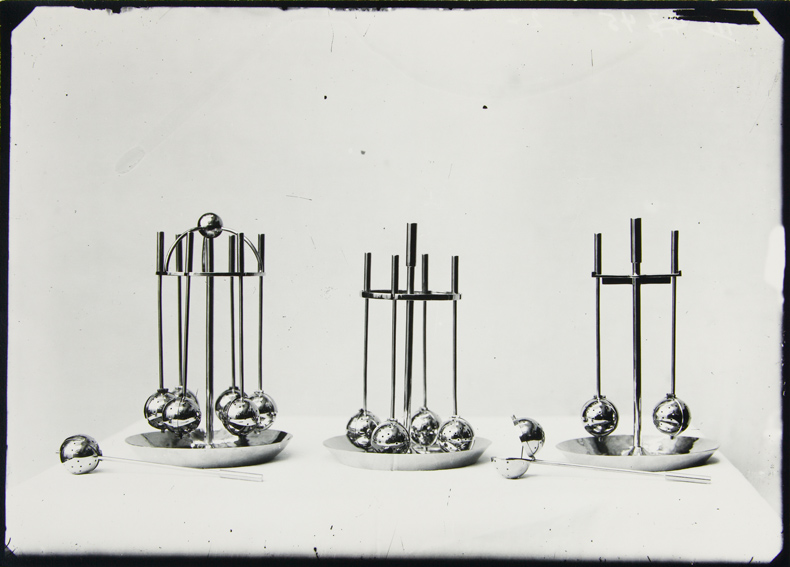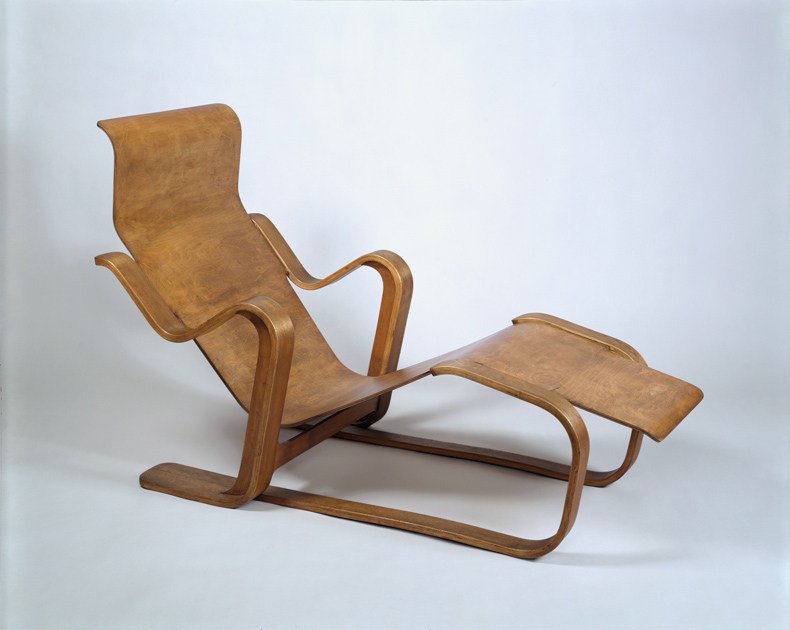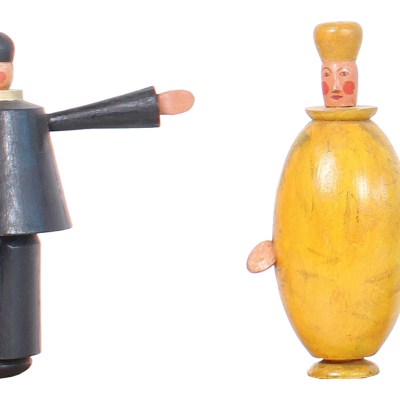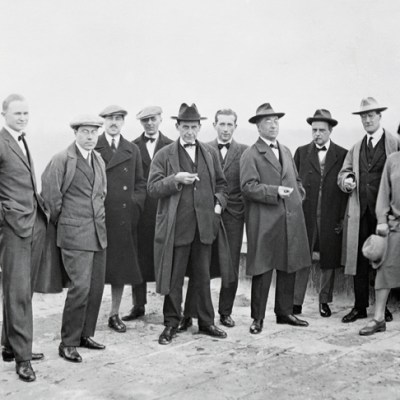From the January 2024 issue of Apollo. Preview and subscribe here.
It was once tactlessly remarked that Hitler was one of the great benefactors of American – and British – post-war culture. Between 1919 and 1933, a ferment of experimentation in the short-lived German Republic was ignored across the Channel and the Atlantic. The emigration of the creators of this culture led to a multitude of new forms, from the English council tower block to the Californian modernist bungalow, and in 1981 Tom Wolfe devoted a whole book, From Bauhaus to Our House, to lamenting the effects. None questioned their importance.
 Revisionists have poked and prodded at this familiar narrative, stressing the routes from Weimar, Berlin and Dessau to Ankara, Tel Aviv or Moscow rather than simply London and New York. Some have tried to bust the ‘Bauhaus myth’ altogether, like the British architectural historian Alan Powers in Bauhaus Goes West (2019), which defended the insular interwar British design scene and attempted to knock the likes of Walter Gropius off their pedestal. Laudably original, it was too obviously partial. Now, with Objects in Exile, the Courtauld art historian Robin Schuldenfrei attempts instead to tell the old story in a new way.
Revisionists have poked and prodded at this familiar narrative, stressing the routes from Weimar, Berlin and Dessau to Ankara, Tel Aviv or Moscow rather than simply London and New York. Some have tried to bust the ‘Bauhaus myth’ altogether, like the British architectural historian Alan Powers in Bauhaus Goes West (2019), which defended the insular interwar British design scene and attempted to knock the likes of Walter Gropius off their pedestal. Laudably original, it was too obviously partial. Now, with Objects in Exile, the Courtauld art historian Robin Schuldenfrei attempts instead to tell the old story in a new way.
The cast is familiar. There are chapters on the Bauhaus director Gropius, its Hungarian polymath László Moholy-Nagy, its designer Herbert Bayer, the architect Ludwig Hilberseimer, the painter Josef Albers and the textile artist and designer Anni Albers. The only figure who is less well known is the photographer Lucia Moholy, for interesting reasons as we shall see. What Schuldenfrei tries to do in her studies of these figures is demonstrate how ideas developed in Germany changed and transformed in their new homes. Wolfe and many like him argued that modernism was simply imported unchanged into ill-suited Anglo-Saxon cultures. But Objects in Exile ‘asserts’, as the author puts it, ‘that displacement itself irrevocably shaped key concepts of modernism’. It’s refreshingly anti-parochial and though the analysis can be dry it is enlivened by a generous selection of colour images.
Stands with tea infusers designed by Otto Rittweger, made by Wolfgang Tümel and photographed by Lucia Moholy in 1925 (printed in c. 1950). Harvard Art Museums/Busch-Reisinger Museum. Photo: © President and Fellows of Harvard College. © 2022 Artists Rights Society (ARS), New York/VG Bild-Kunst, Bonn

The American exile dominates. There is good reason for this: America was a place that the Bauhausler dreamt about long before many of them saw it. Ludwig Hilberseimer’s vast, chilling imaginary cities of gridded offices and housing blocks were inspired by pictures of Chicago, the city where he would live from 1938. Moholy-Nagy cut up and collaged Charles Sheeler’s photos of Ford factories. Josef Albers made abstract paintings on glass from skyscrapers, having never seen one in person. There was never the same interest in British culture. Schuldenfrei’s prioritising of objects over the heated politics of the time brings some freshness to what can be a rather heavy topic, though there can also be pitfalls. For instance, she is careful to differentiate ‘political’ refugees such as Moholy, who as the partner of a Communist activist was under direct threat from the Gestapo, from ‘economic’ émigrés such as Gropius, Moholy-Nagy and the architect-designer Marcel Breuer – unfairly in the latter two cases, given that both were Jewish. She writes well, however, of how Gropius’s circumstances suddenly became straitened when he and his wife Ise found themselves in a one-room apartment in Isokon’s Lawn Road Flats in Belsize Park, a building which also became home for a time to Breuer and Moholy-Nagy. ‘Longtime promoters of a “minimum standard”’ – for Gropius, in terms of the workers’ housing he had designed in Berlin, Dessau or Karlsruhe – they ‘now experienced its constrictions through first-hand experience’. Schuldenfrei argues that this time living in a kind of dormitory became useful in designing student housing for Black Mountain College, North Carolina.
Isokon Long Chair (1936) designed by Marcel Breuer. Harvard Art Museums/Busch-Reisinger Museum. Photo: © President and Fellows of Harvard College, 1999.272

Isokon famously contracted Breuer to design lightweight plywood furniture, but was less successful in architecture, with Gropius-designed blocks for Windsor, Manchester and Birmingham all remaining unbuilt. By 1938, Gropius and Breuer were at Harvard and Moholy-Nagy in Chicago. Schuldenfrei does not see this abortive English experience as a simple failure but rather a ‘period of crucial translation’, beneficial for the Bauhausler’s subsequent work in the United States – it was in London that they learnt English, learnt to work with more organic materials and learnt to adapt to a more individualistic and capitalistic society.
This well-worn story is contrasted with that of Moholy. Born in Prague, she was briefly married to Moholy-Nagy and was an important photographer in Berlin in her own right, preferring a precise, informative ‘New Objectivity’ over the ‘New Vision’ of Moholy-Nagy’s tilted, distorted photographs. Because of this, her documentation of the Bauhaus became hugely important in exile as the most complete evidence of the building. Gropius effectively stole her photographs and often used them in books and exhibitions without credit. However, Moholy was in Britain the most widely read of all the Bauhaus exiles, through her Pelican Special A Hundred Years of Photography (1939), a vivid popular history which sold 40,000 copies.
Detail of a studio-wing balcony at the Bauhaus building in Dessau, designed by Walter Gropius and photographed by Lucia Moholy on its completion in 1926. Harvard Art Museums/Busch-Reiniger Museum. Photo: © President and Fellows of Harvard College, BRGA.20.56; © 2022 Artists Rights Society (ARS), New York/VG Bild-Kunst, Bonn

After this, we’re firmly in the United States. In Chicago, Moholy-Nagy founded a ‘New Bauhaus’ and fretted about a drift to commercialism, but Schuldenfrei shows that much of the school’s work was for the state, in civil defence and military procurement. Similarly, Herbert Bayer rather seamlessly moved from advertising and propaganda design in Nazi Germany into advertising and propaganda design in the wartime United States, producing posters with such pithy slogans as ‘Our Allies Need Eggs’ and ‘America Needs More Meat’. Those who dreamt of America in Berlin in the 1920s were usually satisfied by the country they found in reality, and thrived. Josef Albers, for instance, whose ‘skyscraper’ paintings were severely damaged in transit on his emigration, was able to create grand public murals and reliefs in actual skyscrapers, including Gropius’s Pan Am building.
Objects in Exile is impressively done, but we know a lot about these people now. We still know so little of some of those Bauhaus teachers and students whose work did not change the world. The Derby-based Communist sculptor Theo Balden, the Bromley goldsmith Naum Slutzky, or the documentary photographer and KGB spy Edith Tudor-Hart, to name three minor Bauhausler active in Britain, could tell a story stranger than the one which leads from Berlin through Hampstead to Harvard.
Objects in Exile: Modern Art and Design across Borders, 1930–1960 by Robin Schuldenfrei is published by Princeton University Press.
From the January 2024 issue of Apollo. Preview and subscribe here.



